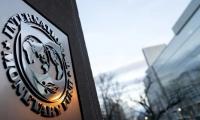KARACHI: Hard currency in circulation – cash in hands – rose 18.12 percent to Rs3.402 trillion as of December 2016 over the preceding year as people were giving preferences to nonbanking transactions.
The State Bank of Pakistan, in its latest report, showed that currency in circulation (CiC) amounted to Rs2.880 trillion as of December 2015. Currency in circulation jumped to Rs3.34 trillion in the mid of last year.
“Rising currency use, in our view, reflects the falling opportunity cost of holding cash,” said Bilal Khan, an economist at Standard Chartered Bank. “This is due to a combination of falling returns on deposits as a means of saving – due to monetary easing – as well as the incidence of tax on the use of the banking system for certain transactions.”
Last year, the government extended the scope of withholding tax on banking transactions by non-filers of returns.
Chief Executive Officer Sakib Sherani at Macroeconomic Insights said the volume of currency in circulation and its rapidly-rising trend vis-à-vis both the monetary base as well as deposits in the banking system are indeed worrying signs.
“This trend goes against the norms of a documented economy and a banking system that is playing an effective role of financial intermediation and inclusion,” Sherani said. “Prima facie it appears that the government’s taxation policy is a major cause for the shift from bank deposits to CiC.”
Pakistan’s informal economy is almost as big as the formal one, perhaps larger. It’s a source for concern for the government as it doesn’t generate revenue to national exchequer.
“The level of CiC can be taken as a broad proxy for the degree of informalisation of the economy and its trend,” Sherani said.
Economists are surprised why CiC is surging amid falling inflation and relatively low transactions into the real estate sector after the upward revision in the property valuation and subsequent changes in the tax rules.
“Though a demand in urban consumption is picking up, yet inflation remains at the lower side,” said Salman Shah, former finance minister.
“We can’t rule out that some currency may be used for all kind of illegitimate activities.”
Currency in circulation, as percent of M2 and currency-to-deposit ratio, has also been increasing over the last few years.
Analysts said though banking deposits grew 20 percent in 2016, yet stakeholders need to render more efforts to increase the penetration of formal banking services into the economy in line with the national financial inclusion strategy. Bank deposits rose to Rs11.2 trillion in December 2016 from Rs9.3 trillion in December 2015.
An undated image of the Honda Atlas Cars plant. — AFP/FileKARACHI: Honda Atlas Cars Limited has officially...
Participants, officials pose for a group photo at "AIM’" event. — ReporterKARACHI: Martin Dow Group underscored...
Special Assistant to Chief Minister of Sindh for Investment and Public-Private Partnership Syed Qasim Naveed Qamar...
This handout photo, released on April 10, 2025, shows a generic view of the Dubai Lynx Awards ceremony at the Emirates...
A view of panel discussion on "How Industries Can Go Carbon Negative and Promote Sustainable Practices" at UCP, April...
Pakistan can benefit from trade diversion, emerge as supplier of textiles, surgical instruments or agricultural goods







